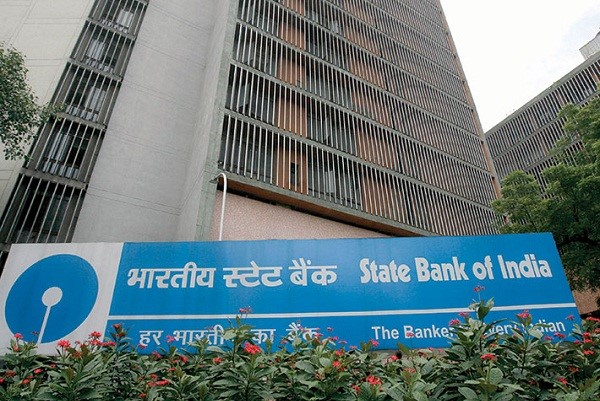Merger of five associate banks and Bharatiya Mahila Bank with State Bank of India has helped the later to enter the league of ‘Top 50 Global Banks’ with a balance sheet size of Rs. 41 lakh crore. It now has 2.77 lakh employees, 50 crore customers, and more than 25,000 branches and 58,000 ATMs. Further, SBI’s market share has increased to nearly 22 per cent from 17 per cent.
Being the largest bank of India, it has acted anti-people. Its savings bank deposit rate was steady at 4 per cent for six years earlier. It has cut it to 3.50 per cent on deposits up to Rs. 1 crore, a move that could prompt other banks to follow suit.
Not only SBI has reduced the rate of interest on savings bank deposit rate, it has hiked the minimum balance requirement to Rs 5,000 in metros, while for rural, semi-urban and urban branches, the cut off is set at Rs 1,000, Rs 2,000 and Rs 3,000 respectively. The savings bank deposit accounts, which failed to comply with these rules, it has levied penalty ranging from Rs 20 to Rs 100, since 1 April. SBI, being the largest bank and the mascot of India’s public sector character, has failed to understand the Indian sentiment. In the past, the Bank had withdrawn the MB requirement for luring new customers.
The move has repelled customers from parking their money in banks, thus making it detrimental to the creation of a bigger formal economy. During the 1st quarter itself, SBI collected penalty of Rs. 235.06 crore from 388.74 lakh account holders. Incidentally the Bank has 31 crore savings bank deposit account holders and out of them, more than 12.50 percent have already been penalised. But it does not seem to bother the management of the bank much, since they are enjoying a windfall recurring income from a non-traditional source. It means that the penalty provision has not been well thought out or there is some lacuna in the provision itself. For some others, it may be a well thought out exercise to generate more income, since the historical data was already available with the Bank.
SBI charges penalty on the basis of branch location which also varies on the basis of percentage of shortfall each month. In Metros the Minimum Balance (MB) is Rs.5000 and the penalty is Rs.50, Rs.75 and Rs.100 for shortfall of MB between <50%, 50% -75%, >75% respectively. Similarly for Urban Centres the MB is Rs.3000 and the penalty is Rs.40, Rs.60 and Rs.80, for Semi Urban centers MB is Rs.2000 and the penalty is Rs.25, Rs.50 and Rs.75, for Rural areas the MB is Rs.1000 and the penalty is Rs. 20, Rs.30 and Rs.50 per month. The irony is that service tax is also deducted along with penalty. State Bank of India considers deduction of penalty as a service to the customer, hence the tax on it!
Ironically, RBI has authorised the Boards of Scheduled Banks (except RRBs) to impose these service charges. The idea may not be bad but the rate appears to be arbitrary and illogical. The Bank charges rent of just Rs.800 per annum for a small size locker in Semi Urban and Rural centers; whereas it can deduct a maximum of Rs.900 in a year for non-maintenance of MB in a SB account in a Semi Urban Centre. After deduction, the Bank has been informing the same to the depositor through SMS. But in Rural areas, large numbers of depositors don’t have mobile phones. A poor SB account holder in a rural branch having a balance of just Rs.300 in his account on 01 April 2017, may find his account to be having zero balance within 14 months, without being informed or his knowledge even. Although the SB accounts opened under Jan Dhan Yojana have been exempted from this Minimum Balance penalty, the poor depositors are heavily penalized because of this heartless attitude of the largest bank of the country. The explanation SBI offered at the time of imposing penalty were: to help in providing better services to the customers, and to offset the cost of maintaining 11 crore Jan Dhan account holders’ – which are ridiculous.
Probably the country’s biggest bank is not able to handle the additional load and wants to get rid of some of its burden. People must come forward to help the Bank in reducing its burden. Those who can’t maintain the required MB should immediately close the account before substantial amount is deducted from their accounts in the form of penalty and service taxes. NGOs and others should create awareness in rural areas in this regard, because the Bank will not. The persons having accounts in other Banks may also consider closing their account with SBI, as multiple accounts don’t really help. Now that the facility of electronic transfer is available in all the Banks, there is no point maintaining an account with SBI, which is not only overburdened but also lost its social obligations. The opening and maintenance of Jan Dhan accounts is a social obligation enforced on them by Union Government and the Bank should not penalise its existing customers for offsetting its cost. The object of any penalty is not to punish but to reform. But in the instant case this appears to be missing.
It is not impossible that if all the zero or low balance savings bank account holders migrate to other banks, who don’t levy charges for not maintaining MB, other banks may also follow the footsteps of SBI. Hence those who are not able to maintain Minimum Balance, especially in rural centres, should be counselled to close the account or switch to an account like Basic Savings Bank Deposit Account (BSBDA) that does not require minimum balance. Unfortunately, there is no campaign or counselling by the Bank at present.
SBI have become so greedy that they had levied penalty twice in many SB Plus accounts, where enough balance was there. While pointed out the mistake, they reversed the penalty. It is illogical and medieval. In a digitalised country like India, the move of the largest bank shall force the customers to think in terms of transacting in cash only.
Here is a solution to address the problem of Minimum Balance. Let SBI provide an overdraft to replenish the amount in the SB account to the Minimum level. Suppose in an urban centre, say Bhubaneswar, there is shortfall of Rs.2000 in an account. The Bank can provide an overdraft and put restriction on its withdrawal. If bank charges even @10% interest, the total interest will come to just Rs 200 per annum, less than Rs. 20 per month and there is no service tax on it. Now, for the same amount of shortfall, the Bank is deducting Rs.80 plus service taxes per month, which is not only arbitrary but also illogical. In no case the penalty should exceed @10% per annum. Whether the Bank has charged penalty at similar rates on its defaulters?
We shall be highlighting the shortcomings of the largest bank of our country, in the next issues. It will be in the greater interest of the SBI and the nation. We shall analyse how SBI has failed to meet the aspirations of the state of Odisha and how the govt. of Odisha has surrendered to this Bank.











































